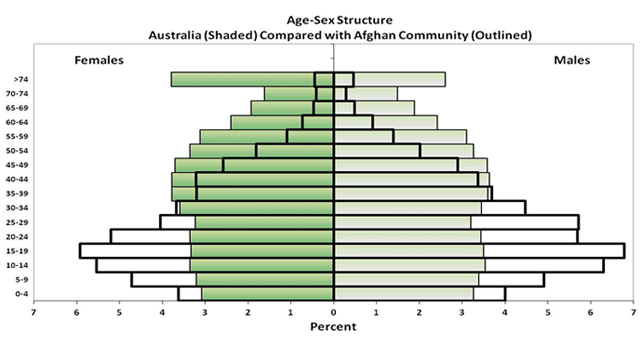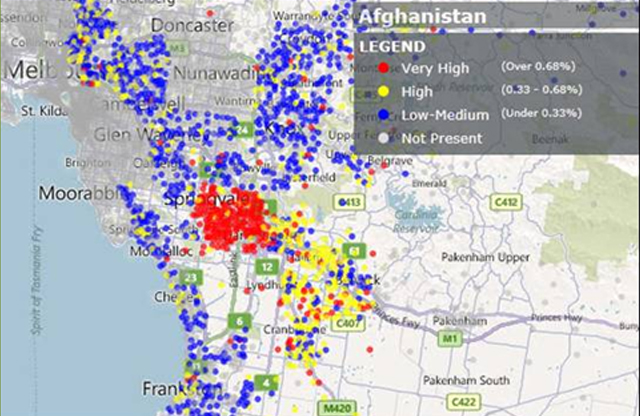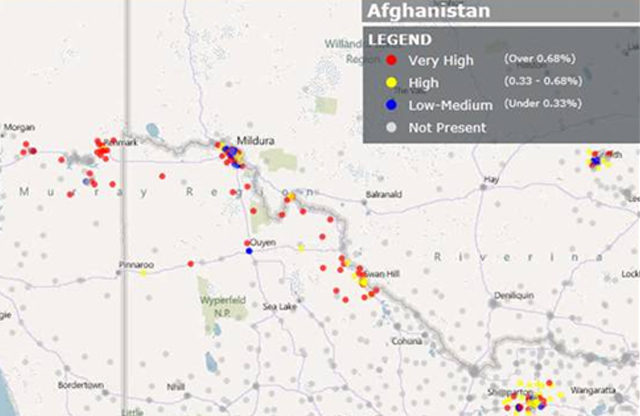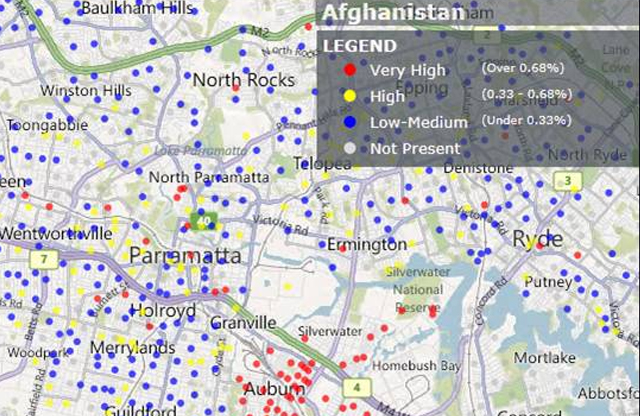Spotlight On … People of Afghani Background
Overview
The first Afghan people arrived in Australia in 1860 when eight Afghani cameleers arrived with a shipment of 24 camels for the Burke and Wills expedition. The number of people of Afghani background in Australia was very small until the rise of the Taliban regime in the 1990s when waves of Afghani immigrants, including many refugees, began to arrive in Australia. Today, there are 17,865 Afghani-born Australians, making up about 0.1% of the population.
Whilst people of Afghani background in Australia are relatively small in number, it is a young and growing community. Some 10,696 people arrived from Afghanistan and settled in Australia over the period 1 July 2006 to 30 June 2011. This group presents an emerging opportunity of significant interest to organisations and marketers. OriginsInfo provides detailed demographics about the Afghani community and helps you refine the best ways to connect with them through campaigns and local area marketing.
Afghan Community Market Characteristics
In line with general population distribution, the majority of the Afghan-born population in Australia live in NSW and Victoria, although South Australia has a higher concentration than both.
| Afghani-born Australians by State/Territory | ||||||||||
| State | NSW | VIC | SA | WA | QLD | ACT | TAS | NT | Not Stated |
TOTAL |
| Afghani Born | 6,699 | 5,848 | 2,339 | 1,782 | 892 | 177 | 68 | 6 | 54 | 17,865 |
| Population (Est 2010) |
7.23m | 5.55m | 1.64m | 2.29m | 4.51m | 0.36m | 0.51m | 0.23m | 22.33m | |
| Afghani Proportion |
0.09% | 0.10% | 0.14% | 0.08% | 0.02% | 0.05% | 0.01% | 0.00% | 0.08% | |
|
Source: Department of Immigration and Citizenship Settlement Database 2008; ABS, 2011
|
||||||||||
The median age of Aghani-born Australians is much younger than most of the population – 28.9 years compared with 46.8 years for all overseas-born persons and 37.1 years for the all Australians. Only 19% are aged 45 and over and almost 2/3rds are aged under 30. Males make up 54.3% of the Afghani-born population in Australia, females 45.7%.

Dari is the main language spoken at home by Afghani-born Australians. Of the 16,180 Afghani-born Australians who speak a language other than English at home, 68.3% speak English well or very well and 29.7% speak English not well or not at all.
Income levels – both individual and household – are generally below the Australian average.

Lower home ownership is a feature of Afghani Australians, with rental rates among the population almost three times higher than the Australian average.
Education levels are generally lower amongst Australians of Afghan background than the Australian average, and Labour force participation at 46% is markedly lower than the Australian average of 64.6%, largely reflecting their younger age profile. It also corresponds with a higher unemployment rate amongst this population (17.7%) as opposed to the Australian average of 5.2%. The largest occupation groups are Labourers, Technical and Trades, Machine Operators and Drivers, and Sales Workers.
The Origins View of the Afghan Community
The Origins name analysis approach provides a unique and consistent data set that works across customer analytics, market analytics and detailed mapping. Mapping the distribution of the Afghan community shows clear geographical patterns.
In Victoria, Afghani-Australians are geographically concentrated in a small number of areas, generally in the south eastern part of Melbourne, notably around Dandenong and in the City of Casey. There are also secondary concentrations in Greater Geelong, Greater Shepparton and in several labour-intensive agricultural production areas along the River Murray.


In New South Wales, the Afghan population is concentrated in Auburn, Lidcombe and Regents Park, with secondary concentrations in Ryde, Parramatta, Holroyd and, in the country, Griffith.

Queensland’s Afghan community is concentrated in Logan while Port Adelaide and Salisbury are preferred locations in South Australia; Belmont and Gosnells in Western Australia.
Marketing Opportunity
While the Afghan –born population in Australia is relatively small, and income, home ownership and education levels are lower than the Australian average, total annual income of the group exceeds $640m. It is an emerging community with specific needs for products and services presenting opportunity for marketers with carefully targeted and communicated offers. The younger demographic structure of the population highlights the opportunity to connect with this community in a way that is different to the ‘mainstream’ Australian market.
Engaging with the Afghan Community
The Afghan community has distinct values, beliefs and customs, largely defined around Islam. It is the dominant religion amongst Afghan-born Australians, with more than 95% of the population stating Islam as their religion. According to Market Leader, Islam has seen a great resurgence over the past few decades, which has resulted in growing numbers of Islamic people worldwide with greater spending power. It is a largely homogenous group with shared values, beliefs and customs which warrant specifically-targeted marketing and communication strategies.
Some customs and beliefs of the Afghan population that may be represented in culturally-specific communication pieces include:
- Religious rituals at birth and death are important. A custom at a Muslim birth is for an adult male to be the first to speak to the newborn infant by whispering a blessing to the infant. This male becomes a special person in the child’s life.
- Some Shariah values are honesty, respect, consideration, kindness, peacefulness, authenticity, purity, patience, discipline, transparency, modesty, community and dignity
- It is normal for people of the same gender to shake hands, kiss on the cheek and hug when greeting. They may also greet by placing their hands over their heart and bowing slightly. Muslim men and women may be reluctant to shake hands with people of the opposite gender. Eye contact is generally avoided between men and women. Eye contact between men is acceptable but is usually no prolonged
- As a sign of respect Afghan Australians do not call older people by their given names
- An Afghan Australian elder’s nod may merely be a social custom showing respect for authority and politeness rather than agreement for what is said
- Afghan Australians are likely to express their appreciation of a service provider by offering words of blessing
- In clothing males typically wear salwar-kameez, while females are expected to wear a burqa
- Afghanistan culture is quite rich when it comes to arts and literature. Poetry in Persian language has dominated the literary sections of Afghanistan, and music is also quite popular
- Various team and individual sports are popular in Afghanistan. A traditional sport with a great fan following is Buzkashi which is played on horseback
Targeted marketing and communication strategies may be timed to coincide with important Afghani events for maximum impact. These include:
| 28th April | Victory of the Muslim nation |
| 4th May | Remembrance Day for Martyrs and Disabled |
| 21st March | New Year |
| 19th August | Independence Day (celebrating independence from Britain) |
| 9th Month of Islamic Calendar | Ramadan |
| 10th Month of Islamic Calendar | Eid (marks the end of Ramadan) |
The Islamic calendar (also called ‘Muslim calendar’ and ‘Hijri calendar’) is a lunar calendar which has 12 lunar months and 354 days in a year. It is employed to date events in predominantly Muslim countries and used to determine the proper day on which to celebrate Islamic holy days and festivals. The lunar year is slightly shorter than the solar year and thus Islamic holy days and festivals can shift by as much as 11 days.